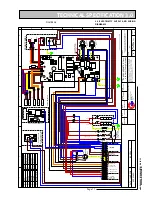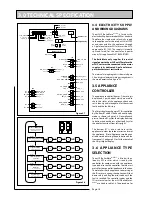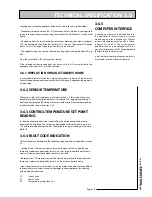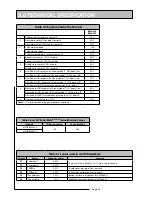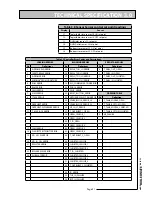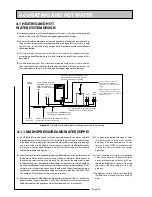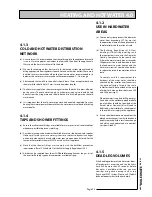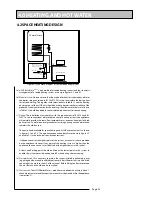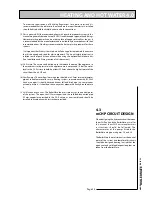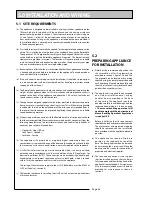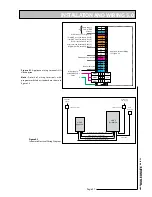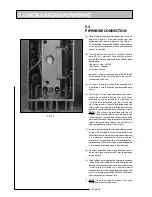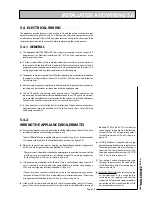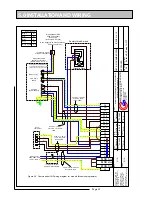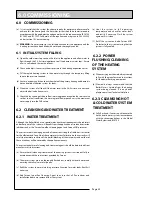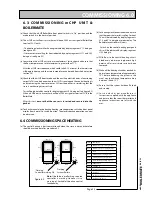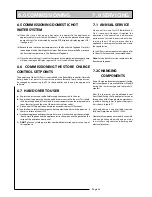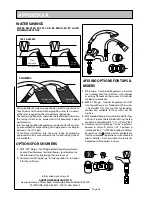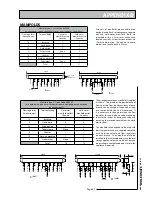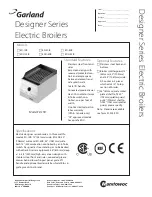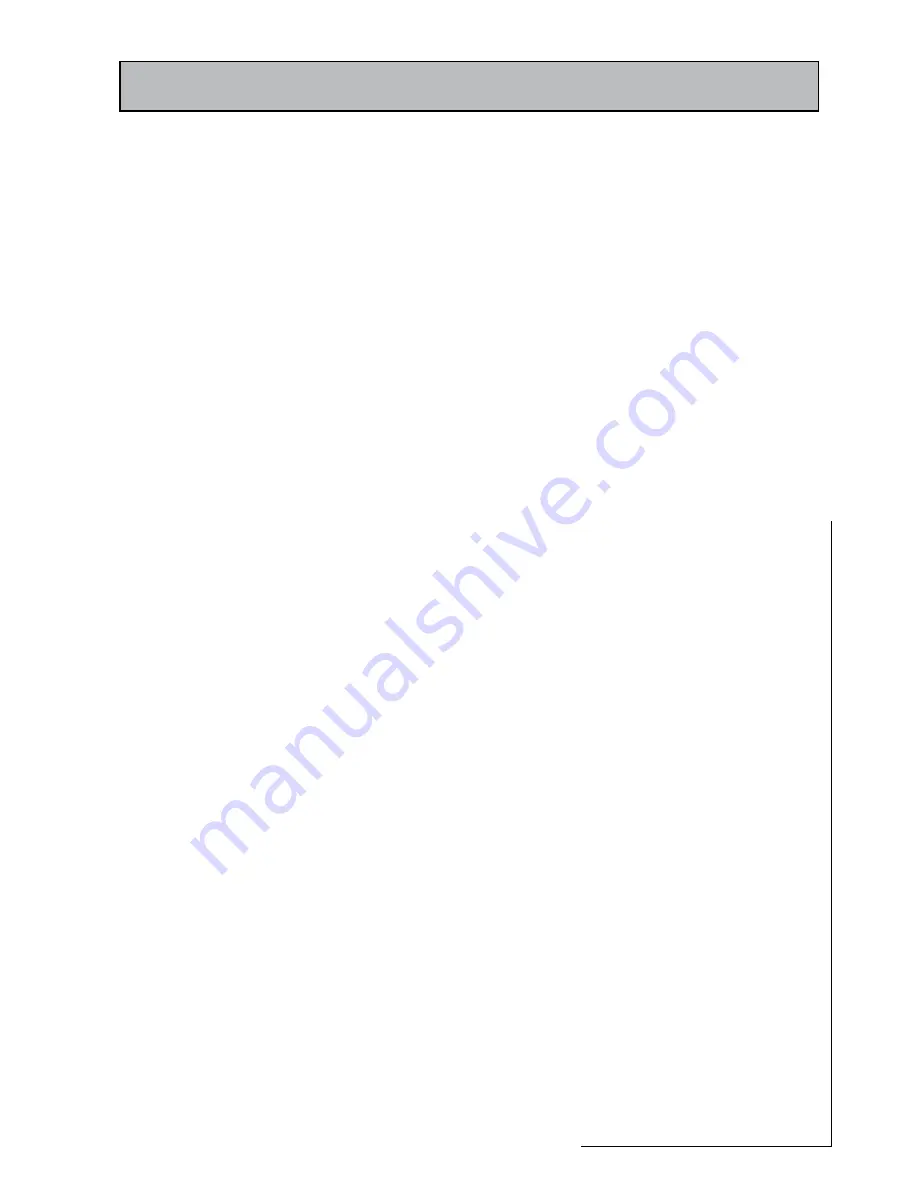
Page 23
mCHP
BOILERMA
TE
A-CL
ASS
HEATING AND HOT WATER 4.0
4.1.2
USE IN HARD WATER
AREAS
(a) The control system prevents the domestic
water from exceeding 55
o
C for most of
the operational time of the appliance and
therefore limits the formation of scale .
(b) The Building Regulations L1A: New
dwellings/L1B: Existing dwellings and
the requirements set out in the Domestic
Heating Compliance Guide specify that
“where the mains water hardness exceeds
200ppm provision should be made to treat
the feed water to water heaters and the
hot water circuit of combination boilers
to reduce the rate of accumulation of lime
scale”.
To comply with this requirement the
hardness of the mains water should be
checked by the installer and if necessary
the optional factory fitted in-line scale
inhibitor should be specified at the time
of order for hardness levels between 200
and 300 ppm (mg/l).
Where the water is very hard ie 300ppm (mg/
l) and above the optional polyphosphate
type, inhibitor should be specified at the
time of order. However, this will need to
be fitted by the installer at a suitable point
in the cold water supply to the appliance.
(c) if scale should ever become a problem the
plate heat exchanger is easily isolated and
quickly replaced with a service exchange
unit which can be obtained at a nominal
cost from Gledhill.
4.1.3
COLD AND HOT WATER DISTRIBUTION
NETWORK
(a) As a minimum, it is recommended that the cold supply to the appliance internally
is run in 22mm copper or equivalent in plastic and then from the appliance in
22mm past the hot water draw-off to the bath .
(b) We would recommend that best results for balanced system are achieved by
fitting appropriate flow regulators to each hot and cold water outlets. These must
be fitted in cases where the final branch pipe sizes are not as recommended in (c)
below or the water pressures are above the recommended 2 – 3 bar range.
(c) Alternatively the tee-offs to the outlets should be in 10mm except for bath and
shower, which should be in 15mm (i metre minimum length).
(d) The hot water supply to a shower-mixing valve should be the first draw-off point
on the circuit. The cold water supply to a shower-mixing valve should be fed
directly from the rising main and should be the first draw off point on the cold
water circuit.
(e) it is important that the cold water pipe work is adequately separated from any
heating/hot water pipe work to ensure that the water remains cold and of drinking
water quality.
4.1.4
TAPS AND SHOWER FITTINGS
(a) Ensure that all terminal fittings are suitable for mains pressure. Use aerated taps
whenever possible to prevent splashing.
(b) Any shower mixing valve used must be suitable for mains fed hot and cold supplies.
However all mains pressure water systems are subject to dynamic changes
particularly when other hot and cold water taps are opened and closed. For this
reason, a thermostatic shower MUST be used with this appliance.
(c) Note that the shower fittings must comply with the backflow prevention
requirements (Para 15, Schedule 2) of the Water Supply Regulations 1999.
(d) A bidet can be supplied from the mCHP BoilerMate appliance as long as it is of
the over rim flushing type and incorporates a suitable air gap.
4.1.5
DEAD LEG VOLUMES
if the dead leg volumes of the hot water draw-
off pipework is excessive and the delivery
time will be more than 60 seconds before
hot water is available at the tap, you may
consider using trace heating such as the
‘RaychemHWAT’ system. Please call Gledhill
technical department for further details.
Summary of Contents for mCHP BMA 225
Page 44: ......









